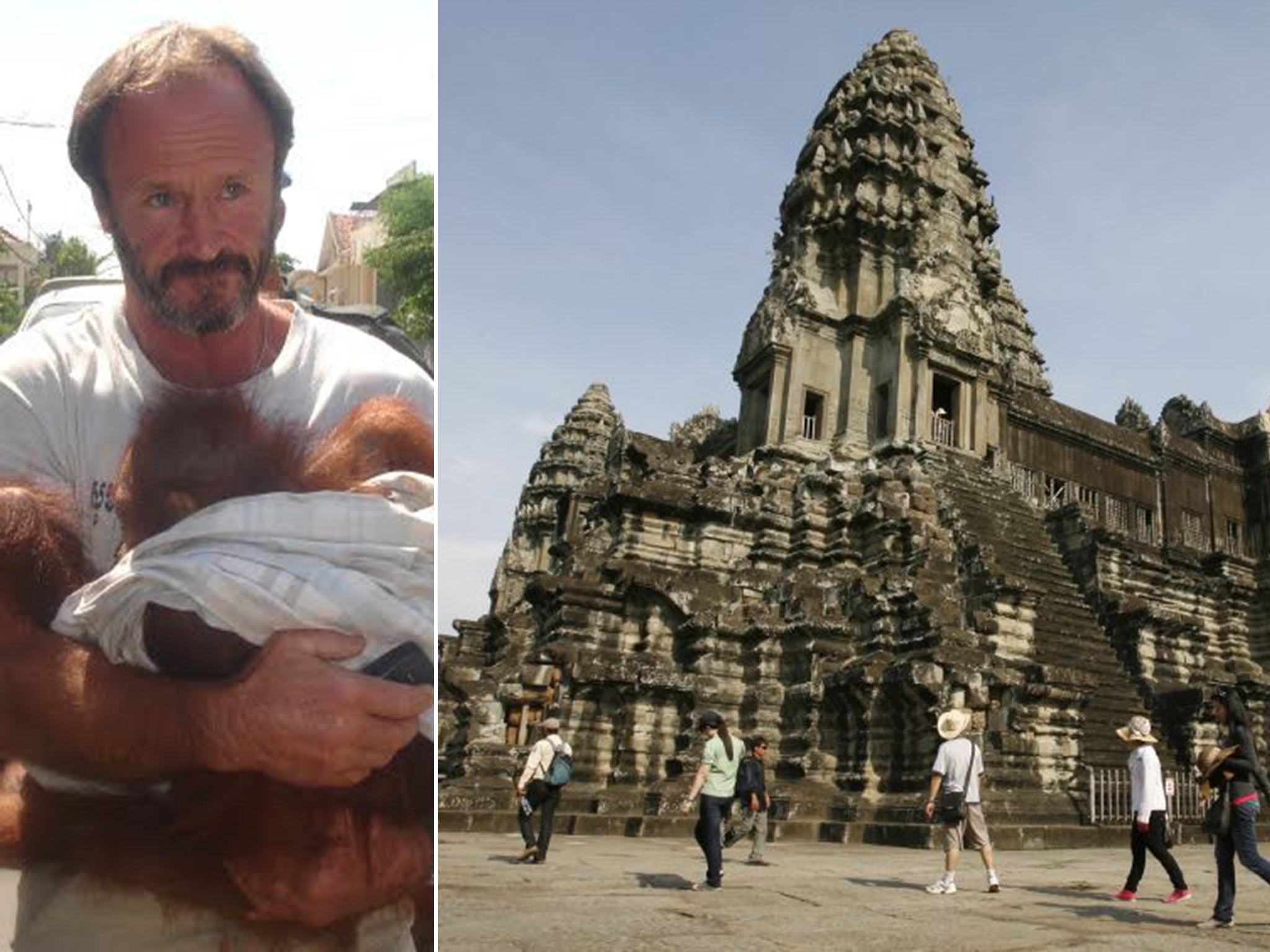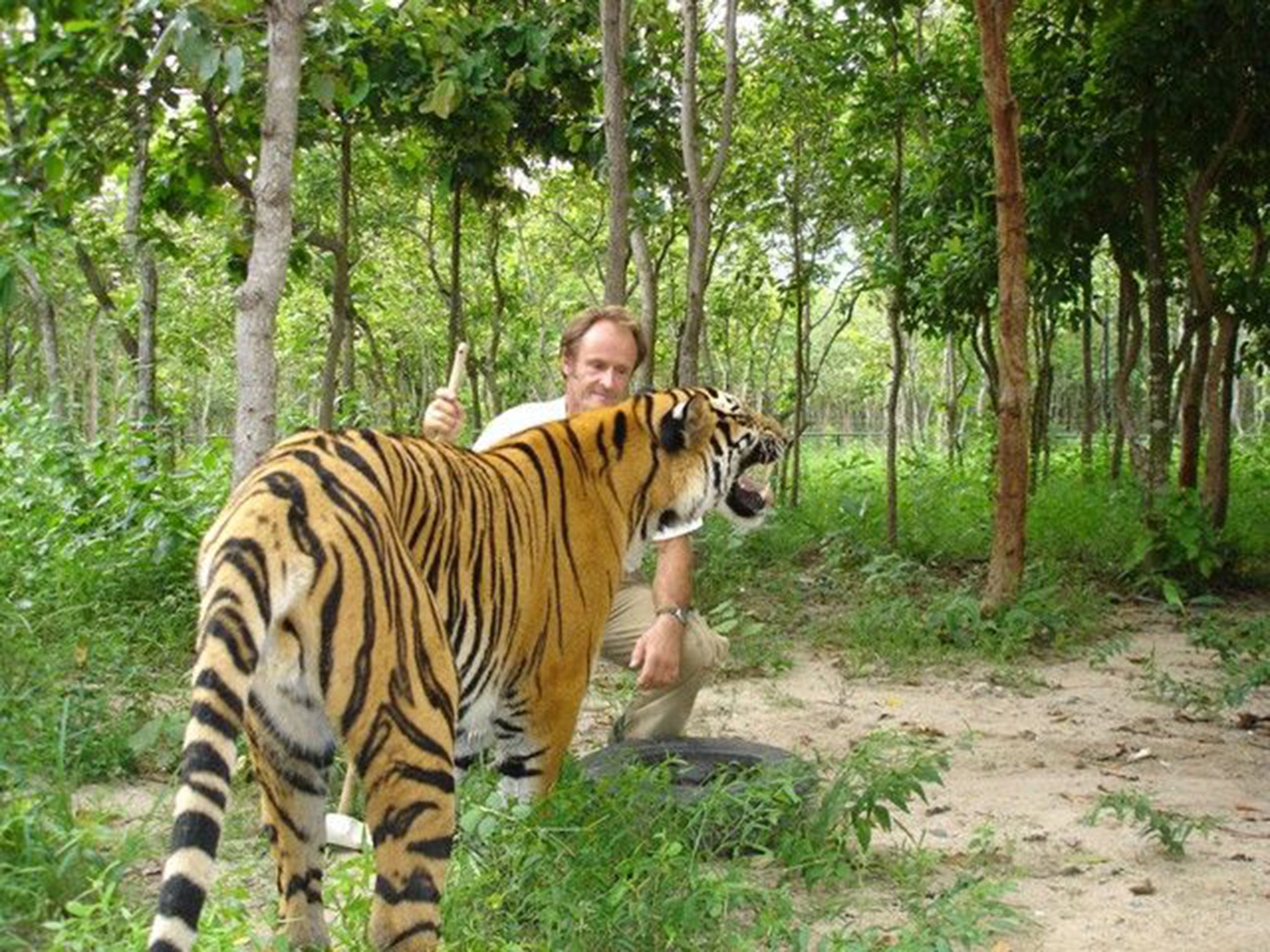The Englishman returning wildlife to Cambodia's Angkor Wat temple complex
The 're-wilding' of the forests near the ancient site could be a model for other projects

Your support helps us to tell the story
From reproductive rights to climate change to Big Tech, The Independent is on the ground when the story is developing. Whether it's investigating the financials of Elon Musk's pro-Trump PAC or producing our latest documentary, 'The A Word', which shines a light on the American women fighting for reproductive rights, we know how important it is to parse out the facts from the messaging.
At such a critical moment in US history, we need reporters on the ground. Your donation allows us to keep sending journalists to speak to both sides of the story.
The Independent is trusted by Americans across the entire political spectrum. And unlike many other quality news outlets, we choose not to lock Americans out of our reporting and analysis with paywalls. We believe quality journalism should be available to everyone, paid for by those who can afford it.
Your support makes all the difference.The forests surrounding the ancient temple complex of Angkor Wat in Cambodia are once more echoing to the eerie, whooping calls of the pileated gibbon, a species, like so many in south-east Asia, that has been decimated by hunting and deforestation.
Conservationists have reintroduced the gibbons as part of an ambitious project for the "re-wilding" of Angkor Wat, a vast "temple city" that was once surrounded by forests teeming with deer, monkeys, birds and big cats before the arrival of commercial hunters with guns, traps and an appetite for money.
The re-wilding is being led by Englishman Nick Marx, a conservationist who believes the project could become a model for other parts of south-east Asia hit by the trade in endangered wildlife.
Angkor Wat, the largest religious monument on earth, was made a World Heritage Site to protect its sprawling network of temples. Now conservationists want to restore the surrounding forests of Angkor Archaeological Park to their former glory, Mr Marx said.
"The area of forest is beautiful and mature. It's a unique site but it's devoid of wildlife now," he said. "We want to introduce different species that would be appropriate, such as a cross-selection of small carnivores, herbivores, primates and deer, to try to get a build-up of wildlife populations with sufficient genetic diversity," he said.
Cambodia, like many countries in south-east Asia, has suffered from the illegal trade in wildlife. Large numbers of animals have been shot, trapped, butchered and skinned, or sold alive in one of the many Cambodian food markets.

Spiralling demand for traditional Chinese "medicine" has driven the trade to new heights. "China has done a pretty good job of decimating its own wildlife and now it is moving into other countries," he said. "There is a certain amount of consumption within Cambodia, but most of the valuable items that can bring a high price such as pangolins and cat skins would be going out either to Vietnam or to China," he said. "With the opening of borders and trade, things are getting worse globally. That means we have to work harder to stop it."
Mr Marx is director of a wildlife rescue service funded by Wildlife Alliance, a New York-based non-governmental organisation that specialises in protecting forests and wildlife. He runs Cambodia's Wildlife Rapid Rescue Team which tackles animal trafficking with undercover operations, armed raids on restaurants and markets, and a network of paid informants willing to provide tip-offs on illegal shipments of live animals and body parts.
"We are known throughout Cambodia. We are feared by wildlife traders. It would be foolish to say there is no risk. We're pissing people off and we are rescuing things like cobras, which often have their mouths stitched up and we have to unstitch them," he added. Why cobras? "They cut their throats to drink their blood with wine and then eat the flesh. People eat everything, from spiders and grasshoppers up."
Many recovered animals are alive and the aim is to return them to the wild if possible. "Almost everything we confiscate, about 90 per cent of it – provided it is in recent captivity and is fit and healthy, and of an age it can look after itself – is released back into a safe habitat," Mr Marx said. "If they cannot take care of themselves, we look after them at a rescue centre," he said. This has included a baby elephant with a missing foot.
Having established Cambodia's official task force to tackle wildlife crime, Mr Marx said it is time to think about re-introducing species to areas where they once thrived such as Angkor Wat. "We were given ermission to release animals back into Angkor last year and we released the first pair of pileated gibbons into this forest last December. This has gone really well."
"The pair had a baby in September. We've taken up another pair of gibbons and a trio of silver langurs, which are a kind of leaf-eating monkey, which we hope to release later," he said. "Ultimately, what I would like to see is herds of sambar and muntjac deer, gibbons and silver langurs in the trees, greenpea fowl in the open areas and clearings. Visitors to Angkor Wat will be able to see the wonderful wildlife of Cambodia and it will focus the mind of the government on the benefits of wildlife conservation in its country."
Join our commenting forum
Join thought-provoking conversations, follow other Independent readers and see their replies
Comments